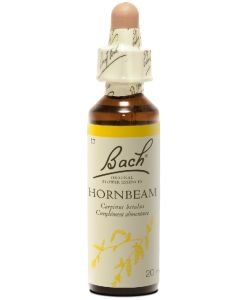You lack the necessary enthusiasm or you have a "Monday morning feeling," you want to put off until tomorrow what you could do today. The Bach flower Hornbeam, also called hornbeam, is a somewhat unusual flower: it only germinates after two or three years. Unlike many other plants, it does not bloom every spring. Despite its slowness, it can be sudden and very beautiful. Some species of Hornbeam, for example, produce superb purple flowers from April to June. However, we most often find catkins, which are a type of dangling, yellow and green flowers at the tips of the hornbeam branches as soon as the warm weather arrives. The hornbeam maintains a beautiful appearance whatever the season. While its serrated and pleated leaves are a soft green in spring and summer, they take on beautiful yellow and orange hues in autumn and remain attached until the foliage renews. Very hardy, it adapts to all soils and does not need much light. Its roots, very dense and deeply anchored in the soil, allow it to live up to 150 years, and to be very little susceptible to diseases.
Adults: 2 drops in a glass of water or on the tongue 4 times a day.
Non-medicinal ingredients: Grape alcohol 27% v/v, aqueous solution of Populus tremula L. flowers (dilution 1/500).



